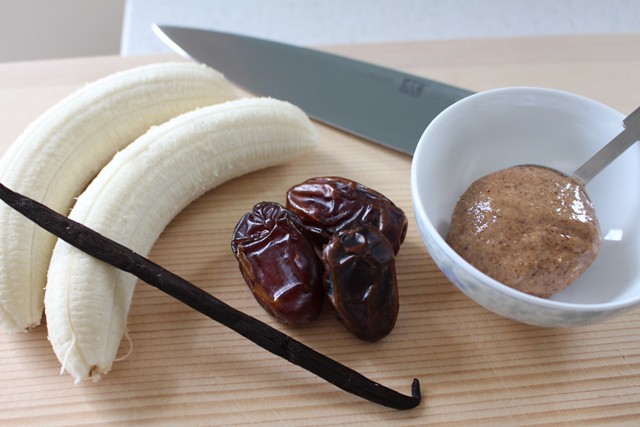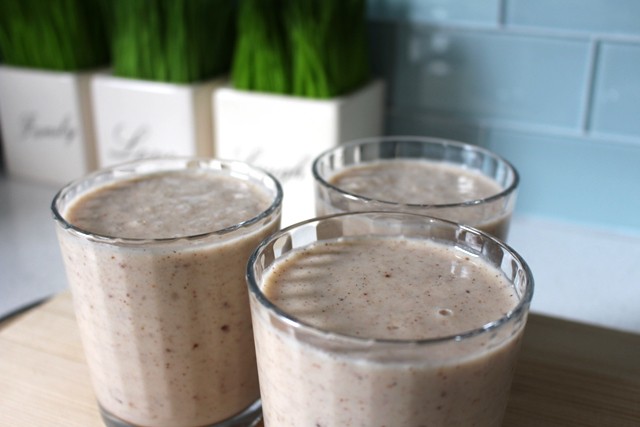You are here
My Return To Being Gluten-Free
 Back when I ran a residential fasting clinic, my diet was virtually free of processed foods, including bread. Breakfast was usually a large bowl of fresh fruit, avocado, romaine lettuce, and celery; lunch was typically a large salad with vegetable soup and some type of legume, often chickpeas or green peas; and dinner usually consisted of a large salad, steamed vegetables, and some type of gluten-free grain like quinoa or brown rice with guacamole or another nutrient-dense dressing. When I craved organic eggs, wild salmon, or homemade chicken broth-based soups, I ate them with gratitude.
Back when I ran a residential fasting clinic, my diet was virtually free of processed foods, including bread. Breakfast was usually a large bowl of fresh fruit, avocado, romaine lettuce, and celery; lunch was typically a large salad with vegetable soup and some type of legume, often chickpeas or green peas; and dinner usually consisted of a large salad, steamed vegetables, and some type of gluten-free grain like quinoa or brown rice with guacamole or another nutrient-dense dressing. When I craved organic eggs, wild salmon, or homemade chicken broth-based soups, I ate them with gratitude.
In the years since closing down my fasting clinic, I have largely stuck to this plant-centered, nutrient-dense diet, along with the whole food nutritional supplements that I have written about in previous posts. But without having to run a gluten-free kitchen to support re-feeding programs for fasting clients, here and there, I have allowed myself the luxury of some gluten-containing products like sprouted whole grain bread.
I'm all for keeping a balanced approach to eating healthfully to support a meaningful life journey, and my belief is that unless there is overt intolerance to a specific food ingredient like gluten or dairy, most people can experience excellent overall health while occasionally eating processed foods like quality bread.
I have had patients in their 90s who have had multiple cups of coffee along with bacon and barbecued meats on almost a daily basis for several decades, and I have also had patients who have passed away from cerebrovascular accidents in their 60s while following a strict, nutrient-dense, plant-based diet. So no one is ever going to convince me that "eating clean" all he time is the only path to longevity.
With all of that said, a few months ago, I noticed that I was feeling fatigued by mid-afternoon on most days, and I couldn't figure out why. So I decided to see if skipping the few servings of bread and noodles that I had in a typical week would make a difference.
I'm happy to share that being gluten-free again has made a significant difference in how I feel. I wouldn't have thought that in following a nutrient-dense, plant-centered diet, that a few slices of sprouted whole grain bread and some buckwheat-based noodles (that still contain some gluten) could have significant impact on how I feel.
I've long strived to stay fit and active, and in returning to being free of gluten over the past 90 or so days, I'm no longer feeling sleepy by 1 or 2 pm, and I've even noticed that in dropping 4 to 5 pounds, I am feeling lighter and quicker on the tennis court, which makes a huge difference in my ability to compete.
To satisfy my need for something filling after workouts or later in the evenings while avoiding dairy and gluten, I have been drinking more smoothies, which I highly recommend as a strategy for minimizing intake of processed foods.
Here is a recipe for my go-to smoothie these days, which happens to be rich in easily-absorbed plant protein and is excellent for satisfying cravings for something sweet while not putting too much burden on blood sugar and insulin levels:
Almond Date Smoothie Recipe
Quantities listed produce approximately 3 small (12-ounce) or 2 large (16-ounce) Almond Date Smoothies.
Ingredients:
2 bananas, chopped - room temperature or frozen
2 heaping tablespoons of almond butter
3 Medjool dates, seeded and chopped
Pulp of one vanilla bean, or one flat teaspoon of dried vanilla bean powder
Unsweetened almond milk
Directions:
Combine all solid ingredients in a blender, add enough almond milk to cover everything, then blend for an ultra rich smoothie. For a lighter consistency, add another inch of almond milk to your blender before blending.
Depending on the strength of your blender, you may end up with little chewy morsels of Medjool dates in your smoothie, which you may thank the universe for.
If you store leftovers in the refrigerator overnight, you may see some separation of clear liquid from the creamy body of this Almond Date smoothie. If this happens, just give it a quick stir with a fork before drinking - I promise it will be just as rich and tasty as it was right after blending.
---
If you can stick with natural foods like this Almond Date smoothie, snacks that are made with minimally processed foods, I don't think you'll miss processed foods that are abundant in gluten, dairy, sugar, and other ingredients that don't give you anywhere near as much nutrient value per calorie.
I'm glad that my mid-afternoon bouts of fatigue prompted me to tighten up my dietary choices, specifically, to go back to avoiding gluten whenever possible. I'm not suggesting that being gluten-free is for everyone. Just sharing a small part of my journey and love for smoothies. :)
Addendum 2016 - In following the suggestion of Michael Pollan to try wheat that has been fermented to make gluten better suited for human digestion, I have found that I can thrive while having foods that contain fermented gluten, sourdough bread being the main one that I have a few times a week. Those with Celiac disease should avoid even fermented gluten, but for those who have a mild to moderate sensitivity to gluten, if you are feeling adventurous, I think it is worth trying traditionally made foods like sourdough bread.
Join more than 80,000 readers worldwide who receive Dr. Ben Kim's free newsletter
Receive simple suggestions to measurably improve your health and mobility, plus alerts on specials and giveaways at our catalogue
Please Rate This
Highest Rated | Related Posts | ||












